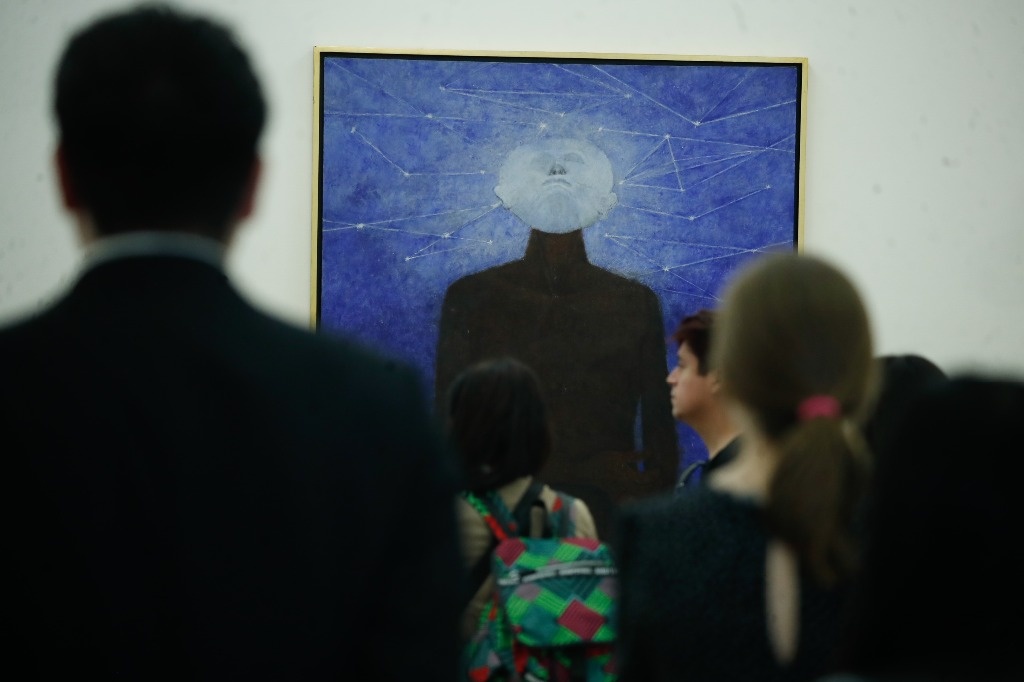The oil The illuminated (1975), by Rufino Tamayo (1899-1991), presides over the first room of the exhibition The paradoxes of internationalism (told by the Tamayo Museum collection), whose second part is also curated by the English Kate Fowle, in collaboration with Andrea Valencia.
In the 70s of the last century, the Oaxacan painter revealed that his perspective on life changed forever in 1945, following the nuclear bombing of Hiroshima and Nagasaki. Tamayo was already thinking about the man facing not with his world, but with the infinite
.
The exhibition, the first of the year for the Tamayo Museum, commemorates the artist’s 125th birth anniversary through a look at his collection, both the original work with which the facility was inaugurated in 1981, and the subsequent additions.
The title is based on the premise that the Tamayo is the first international museum made in Mexico and, therefore, its collection. Therefore, it was necessary to review the use of the term International
o internationalism
, because its meaning has changed over the centuries. The first time the term was used was in 1780, in Europe, to describe governance between states that became nations with their nationalisms
which caused wars, displacement and competition, explained Kowle, current curatorial director of the Hauser & Wirth gallery.
A second version of International
It has to do with the formation of bodies such as the United Nations or the Universal Declaration of Human Rights, Kowle continued. Again, in the 90s of the last century its meaning changed with the creation of a global network, the fall of the Berlin Wall and the collapse of the Soviet Union. Suddenly the world is different, while the way you think about being international is much more interconnected by the Internet
noted the curator.
With the entry into force of the Free Trade Agreement in 1993, Mexico experienced a great internationalization of the art world
. In the most recent version of the term, we share catastrophes and crises
. The present exhibition works with works of art from the museum’s collection that visually refer to all aspects of these stories of internationalism
.
The curatorial project begins with a paradox to the extent that Upon Tamayo’s death, the collection he has formed and his way of seeing internationalism changes dramatically due to the transformations in the world. So the Tamayo Museum now operates in an international society very different from the one its benefactor imagined most of her life.
said Fowle.
The first section of the exhibition includes a video in which Manthia Diawara, from Mali, interviews the philosopher Edouard Glissant, from Martinique, who talks about globality
. That is, instead of thinking about the world in terms of a series of differences between people, think about multiplicity and the many ways of living all at the same time.
The second core of the exhibition, about how to understand the world from the perspective of the other, reproduces on the wall a large map made by the surrealists in 1929, in which most of the countries imperialists
especially the English-speaking ones, were eliminated to create an ideal world
.
This second room includes Forecaster (1985), a painting by Robert Rauschenberg, belonging to the Televisa collection, which the American painter made for the people of Mexico
. His 1985 exhibition, at the Tamayo Museum, was part of the Rauschenberg Abroad Cultural Initiative, which began in Mexico. Also on display is a series of contacts from photographs taken during his visit here, from the Rauschenberg Foundation, which are shown for the first time.
The last section of the exhibition revolves around our contemporary problems that are global, such as climate change, displacement and migration
. Many of the works presented here entered the collection after Tamayo’s death. It also includes a commission made by the French Julia Rometti, mounted on a generally closed terrace.
Incredible
answers Fowle when asking The Conference about his first impression upon seeing the museum’s permanent collection. It is seeing works that Tamayo collected from his artistic perspective. Her first-hand knowledge of him as an artist regarding who could be important both in the United States and Europe, but also Latin America, makes her unique.
assured the curator.
The paradoxes of internationalism (told by the Tamayo Museum collection) closes on August 23 at the Tamayo Museum (Paseo de la Reforma 51, Bosque de Chapultepec).
#Tamayo #Museum #reviews #evolution #global #concept #painters #work
– 2024-04-14 05:19:52

